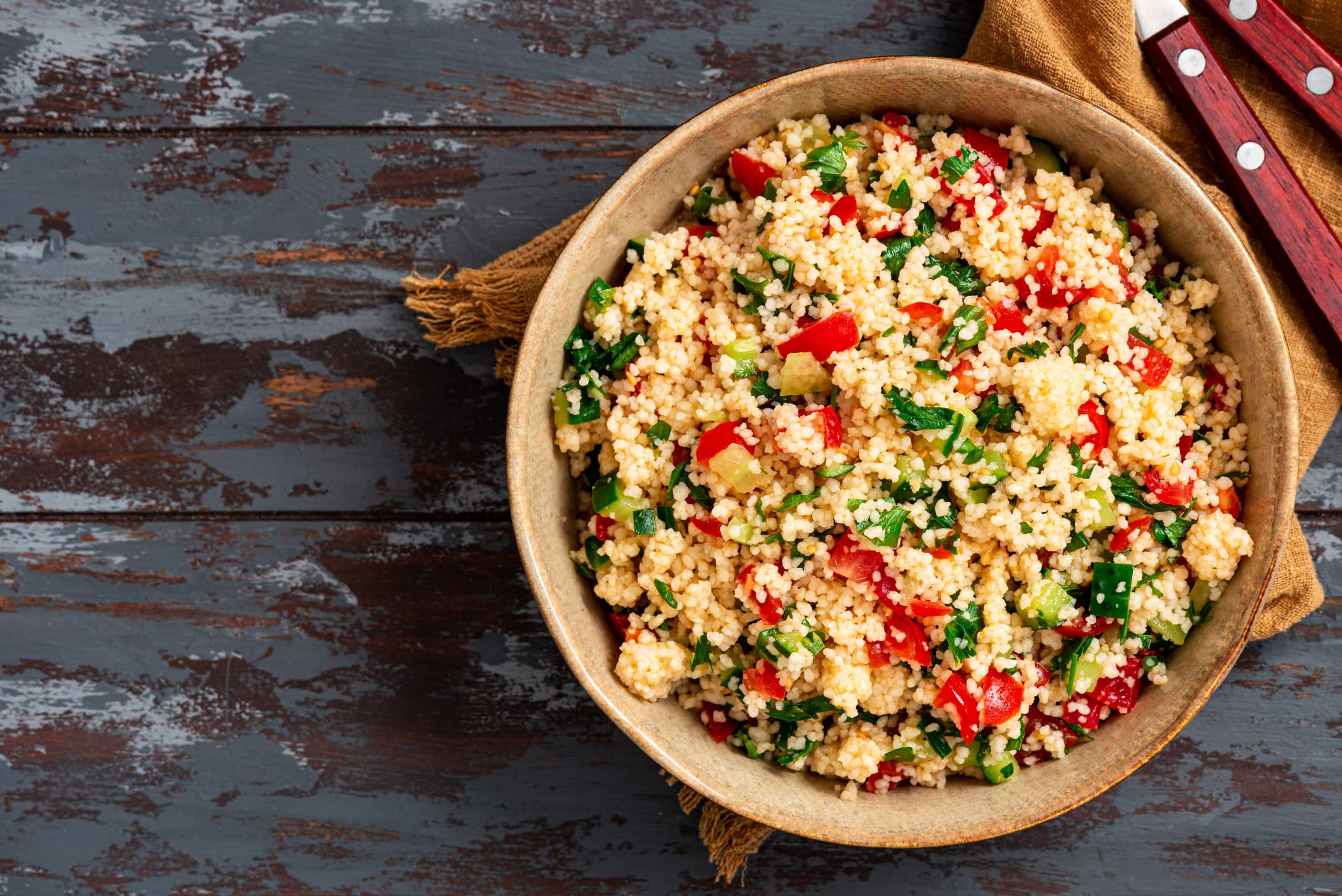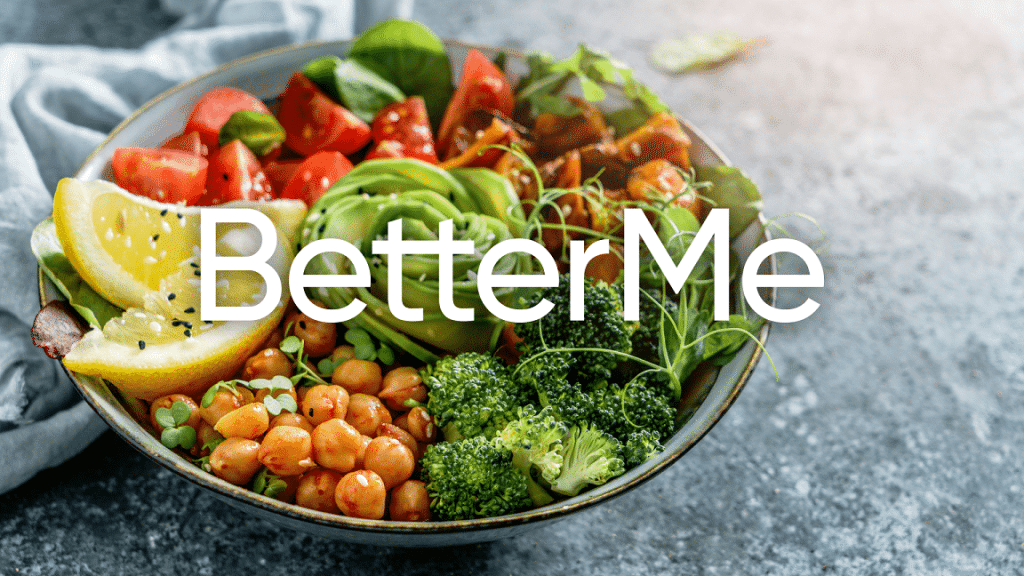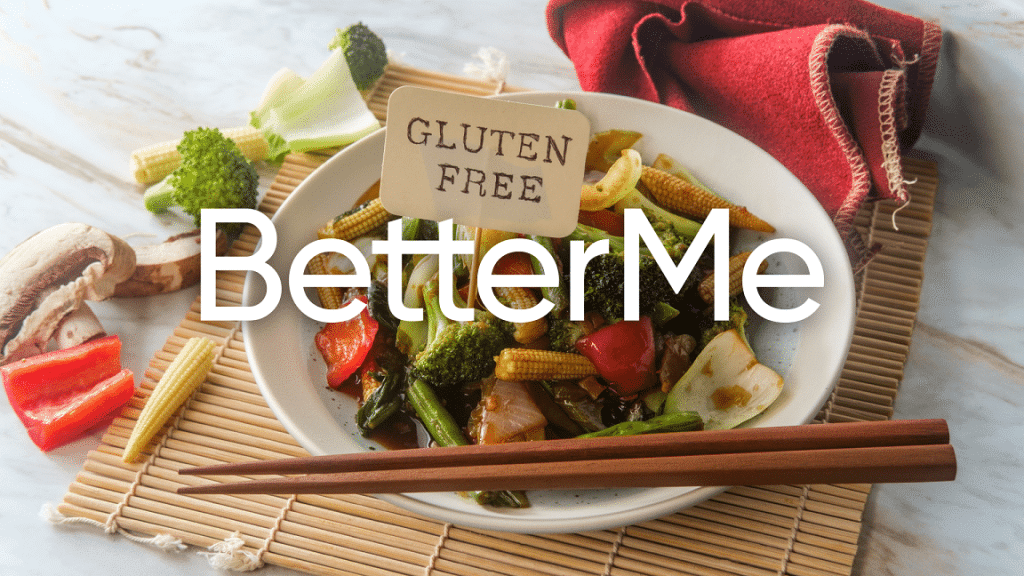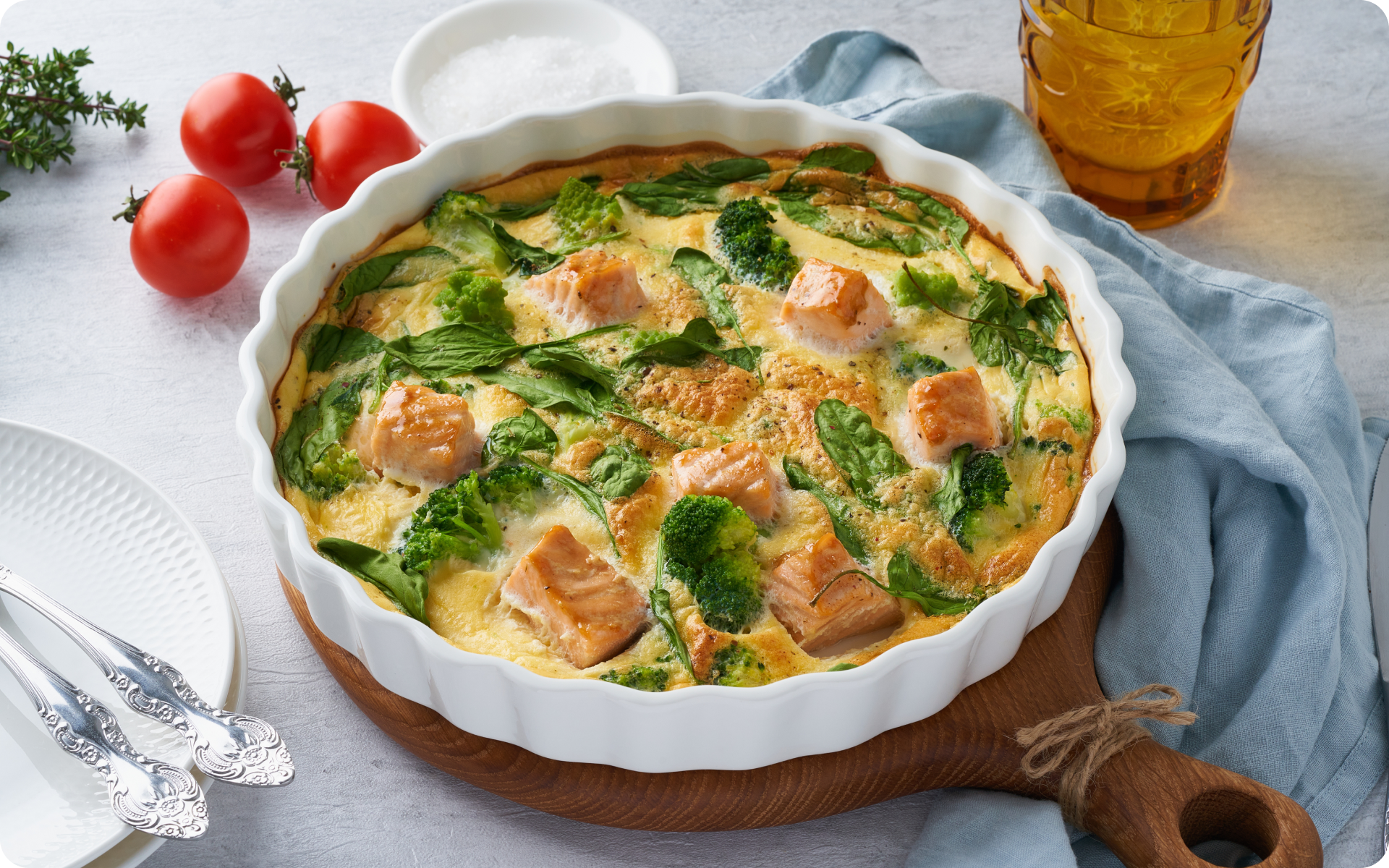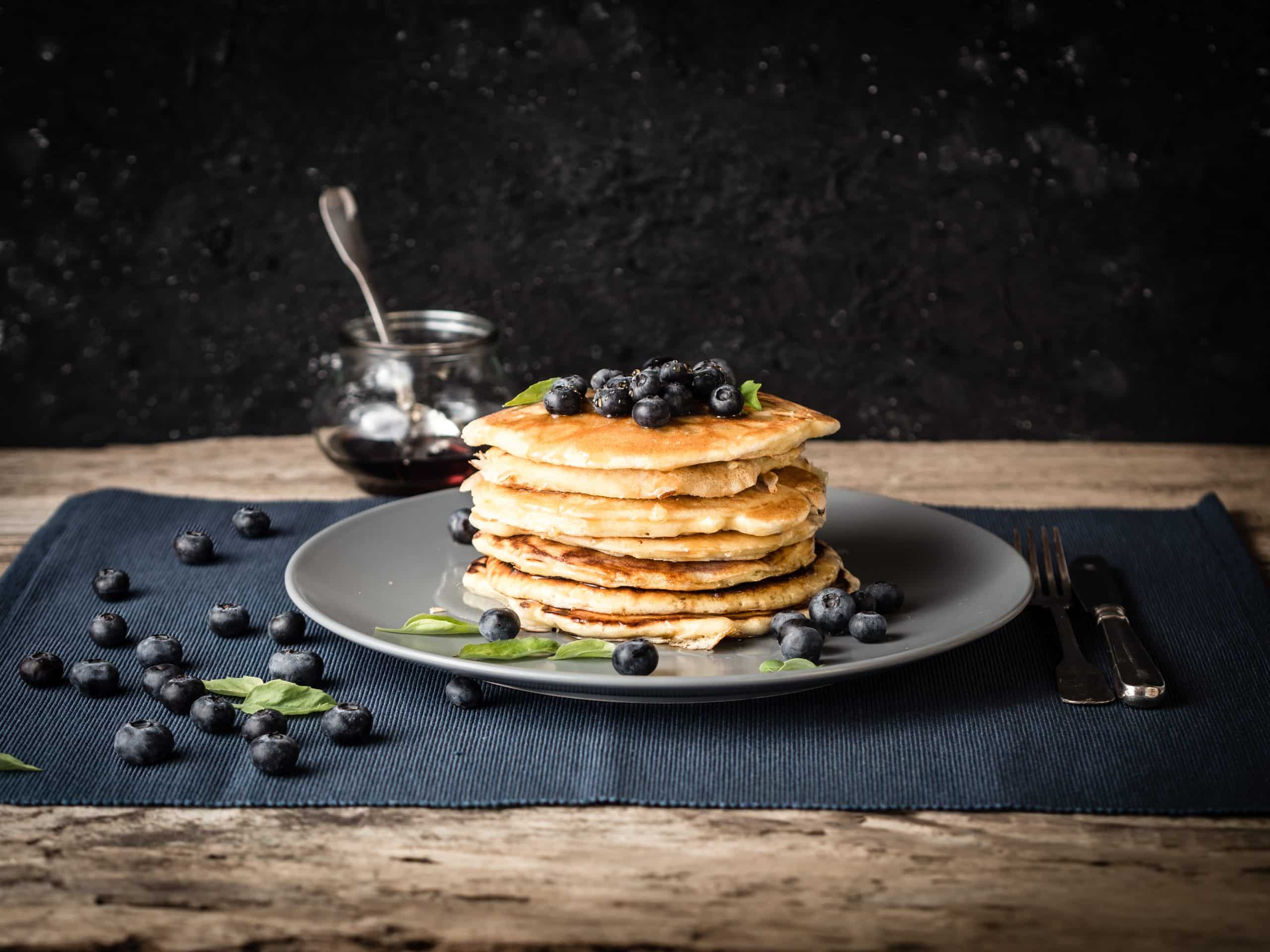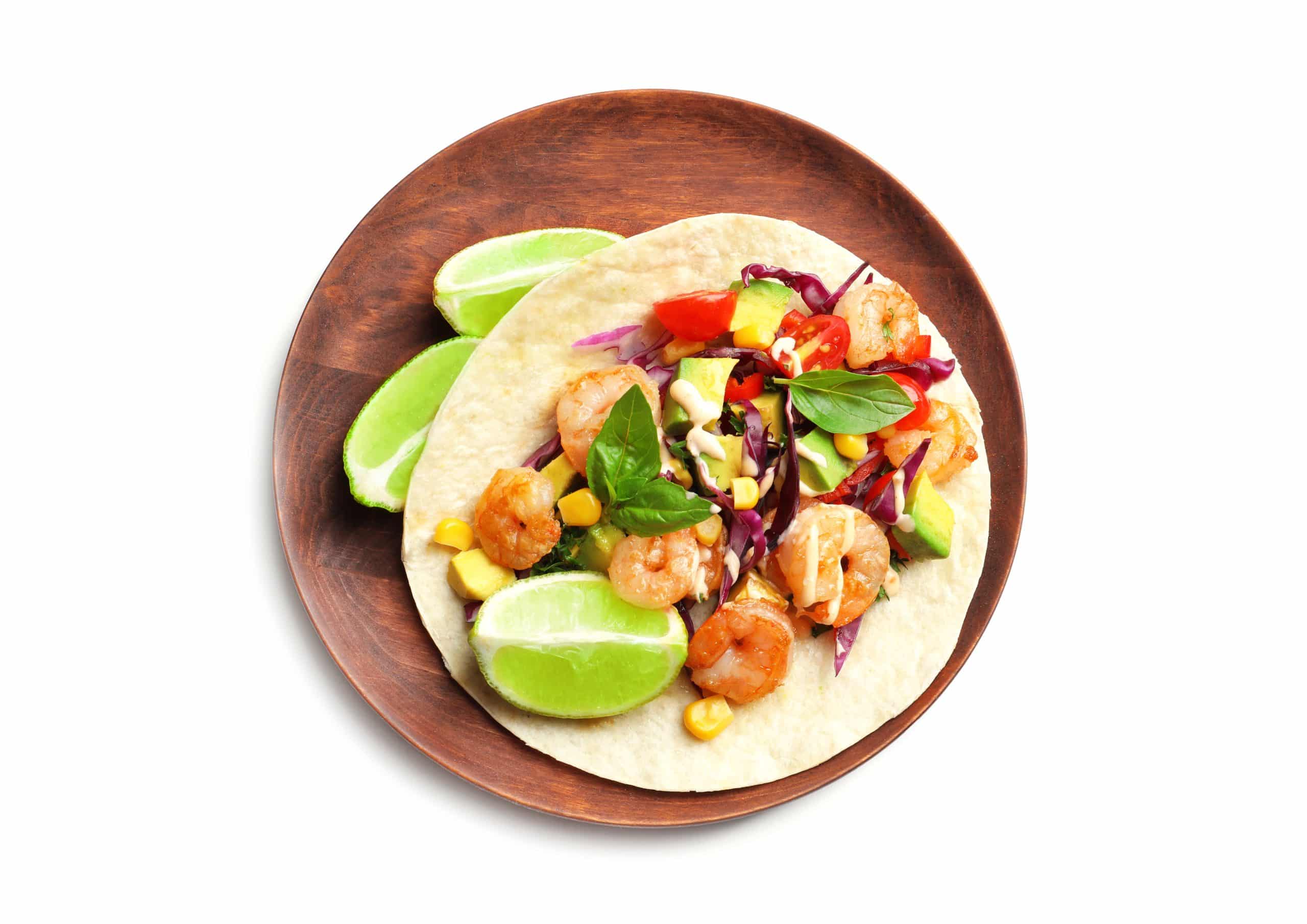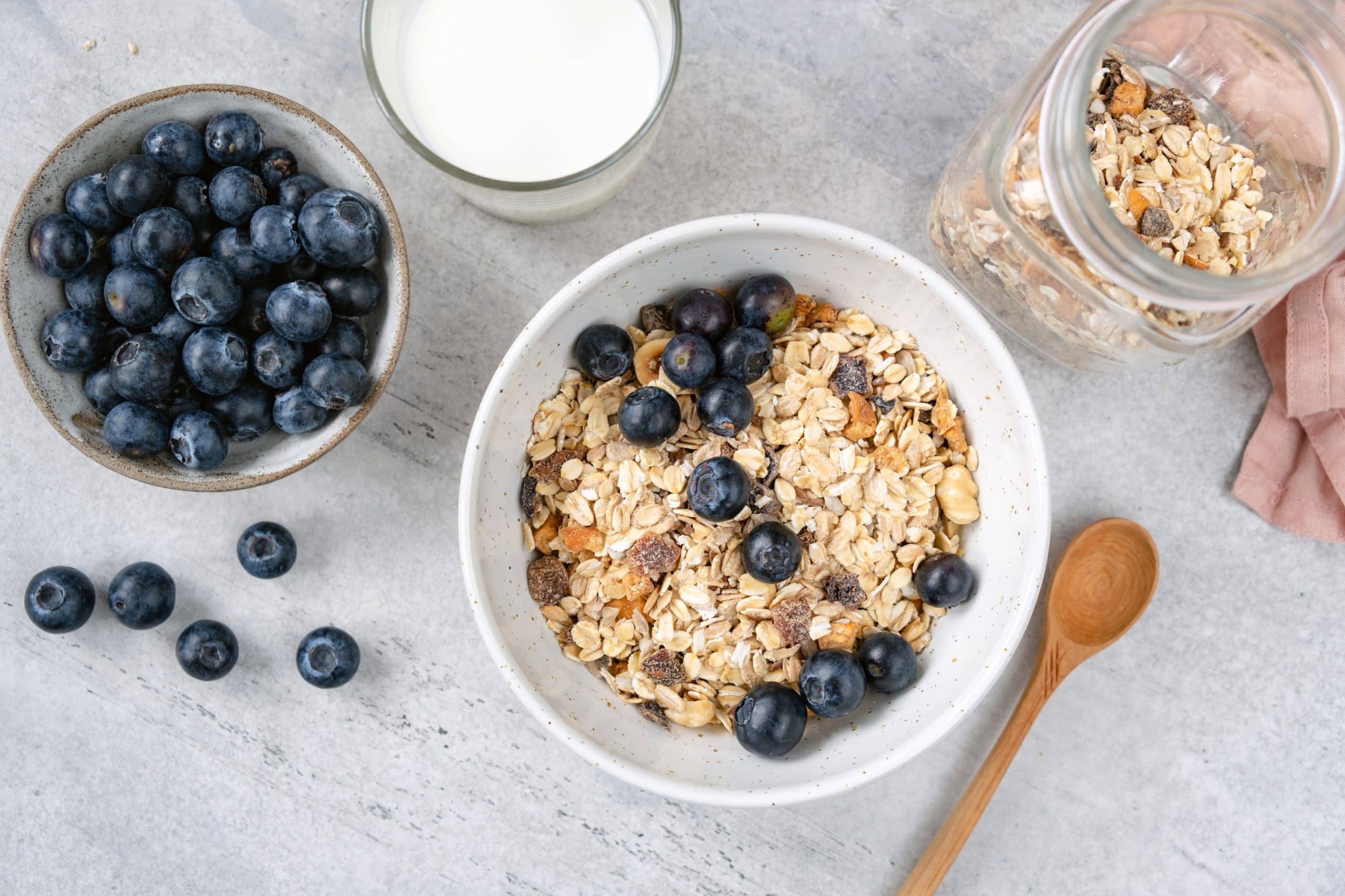A yummy couscous salad paired with grilled chicken or roasted vegetables, an even more delicious couscous dish topped with feta and olives, or a comforting bowl of traditional Moroccan couscous – it’s no wonder this whole grain is so popular.
Get your personalized
meal plan!
But is couscous really an option if you need to avoid gluten?
Couscous is traditionally made from semolina wheat, which contains gluten. So yes, couscous does contain gluten.
However, some brands offer gluten-free couscous as an alternative to regular varieties, such as gluten-free pearl couscous. Gluten-free couscous is generally made from quinoa, corn, amaranth, and other grains that are gluten-free.
But that’s not all. There is another option for those who are sensitive to gluten: grains similar to couscous, edible seeds, and tubers that resemble couscous in both texture and flavor. These include buckwheat-based kasha or radella, millet, ground chestnuts, cassava root (also known as yucca), quinoa, and even chickpea flour.
Let’s take a closer look at the gluten content in couscous, why some couscous is labeled as gluten-free, and the various alternatives you can consider.
Does Couscous Have High Gluten?
Yes, couscous contains gluten. Despite its rice-like appearance, it’s made from semolina, which is derived from durum wheat. This means that it naturally contains gluten, a protein that is found in wheat, barley, and rye (4).
Manufacturers have now started producing gluten-free couscous alternatives to cater to those with dietary restrictions. Gluten-free couscous is typically made from corn, quinoa, or rice – grains that naturally do not contain gluten.
These alternatives are processed in a similar manner to traditional couscous, which results in a product closely resembling the texture and flavor of the original. However, cross-contamination can occur during processing, so those with severe gluten sensitivity or celiac disease should look for products that are specifically labeled as being gluten-free and preferably certified by a reputable organization.
Gluten-free certification is an assurance that samples of a product have been tested and found to be free from gluten. This means the samples tested contain fewer than 20 parts per million (ppm) of gluten and the product is considered likely to be safe for those with celiac disease(7).
Certified gluten-free products may be labeled as such on the packaging, or they can carry a seal indicating the product to be “gluten-free.”
BetterMe app will provide you with a host of fat-frying fitness routines that’ll scare the extra pounds away and turn your body into a masterpiece! Get your life moving in the right direction with BetterMe!
How Much Gluten is in Couscous?
The exact amount of gluten in couscous may be difficult to determine, as this varies depending on the type of couscous and its ingredients. The manufacturing process, storage conditions, and cross-contamination during processing can also affect the amount of gluten that is contained in a particular product.
According to the Food and Drug Administration (FDA), products that are labeled as gluten-free must contain fewer than 20 ppm of gluten, while those that are labeled as “low in gluten” can contain up to 100 ppm (6). Regular, wheat-based couscous is not gluten-free or low in gluten, so its gluten content will be much higher.
Who Should Not Eat Couscous?
For the following people, consuming gluten can trigger serious health problems, such as nutrient deficiencies, digestive issues, or damage to the small intestine in the case of celiac disease. If you fall into any of these categories, you should consider using a couscous replacement in your meals:
Diagnosed With Celiac Disease
Celiac disease is an autoimmune disorder where gluten ingestion leads to damage in the small intestine. As couscous contains gluten, it can trigger harmful reactions in these individuals (1).
Non-Celiac Gluten Sensitivity (NCGS)
While this is not as severe as celiac disease, NCGS can still cause uncomfortable symptoms such as bloating, stomach cramps, and fatigue following the consumption of gluten-containing foods such as couscous.
Wheat Allergy
People with a wheat allergy have an allergic reaction to proteins that are present in wheat, which are typically different proteins than gluten. As couscous is made from durum wheat semolina, it can cause allergic reactions that range from mild (rashes, hives) to severe (anaphylaxis).
Irritable Bowel Syndrome (IBS)
Some people with IBS follow a low FODMAP diet as a means of managing their symptoms or for identifying specific triggers. Wheat-based products such as couscous are high in FODMAPs and may trigger IBS symptoms in some people (9).
Following a Gluten-Free Diet
People who follow a gluten-free diet for personal, health, or lifestyle reasons should also avoid couscous.
Gluten Ataxia
This is a rare autoimmune disorder that affects nerve tissue and is triggered by gluten consumption. Individuals with this condition should avoid couscous.
Dermatitis Herpetiformis
This is a chronic skin disorder that is a manifestation of celiac disease. Consuming couscous can exacerbate this condition.
Remember, if you identify with any of the above, it’s best to seek advice from a healthcare professional or a dietitian before you make any significant dietary changes.
Read more: Gluten Free Bread Recipes: Light, Fluffy, and Delicious Breads.
What Grains Have No Gluten?
Grains are a healthy addition to your diet, and an intolerance shouldn’t stop you from enjoying them. To replace couscous in your meal, you can use one of the following options:
- Quinoa: A member of the goosefoot family, it’s a complete protein and doesn’t contain any gluten
- Millet: Made from small round seeds that come in different varieties such as red and white millet
- Rice: One of the most popular grains for its versatility in cooking, rice is also naturally gluten-free
- Buckwheat: Not actually a grain, buckwheat is a seed that has a nutty flavor and chewy texture
- Amaranth: Similar to quinoa, but with an earthy taste, amaranth seeds are gluten-free
- Teff: Made from tiny grains of millet, teff is rich in calcium and iron and comes in both light and dark versions
- Corn: Corn is gluten-free and versatile and can be found in many dishes
- Sorghum: A type of grass with an earthy flavor, sorghum can be cooked like other grains to create breakfast porridges or fluffy side dishes
Incorporating these grains into your gluten-free low-carb diet or gluten-free diet plan can add variety and nutrients without having a potentially undesirable side effect. For example, teff can be cooked and served with fruits or nuts to make a sweet breakfast porridge, or you can cook quinoa and add vegetables to create a delicious main course.
What is a Gluten-Free Alternative to Couscous?
So, what is a good substitute for couscous when you need to stop eating gluten? For those who are looking for gluten-free alternatives, there are plenty of grains and seeds that can be used in the place of couscous.
Quinoa, a grain that is naturally gluten-free and high in protein, is a popular choice. It’s versatile and can be used in a wide variety of dishes, such as salads or stews.
Despite its misleading name, buckwheat is not a type of wheat and does not contain gluten. It can be processed into a product similar to couscous, known as kasha or radella. Millet is another alternative that has a similar texture to couscous when it is cooked and is also gluten-free.
Ground chestnuts, cassava root (also known as yucca), and chickpea flour can also be used to make a couscous-like dish. These alternatives are not only gluten-free but they also bring their unique flavors to your meals.
You may not need to look too far to find a couscous substitute; short-grain rice can easily replace couscous in salads or soups. Not only is it gluten-free, it also has a similar texture and flavor.
You don’t need to limit yourself to grains either. When cooked and mixed with spices, cauliflower makes an excellent faux-couscous dish. This versatile vegetable is a low-carb, low-gluten alternative to couscous. It is also full of vitamins and minerals, making it a nutritious option.
For those who still crave the texture and flavor of couscous, there are ready-to-eat gluten-free couscous products available on the market. They are generally made from corn, rice, or quinoa and are a convenient option for those who don’t have the time to prepare alternatives from scratch.
Although these couscous alternatives don’t contain gluten, you should always check the labels for any mention of gluten or wheat, as cross-contamination can potentially occur during the manufacturing process.
BetterMe is your fast-track ticket to a long-lasting weight loss! Tailor your fitness journey and maximize your results with just a couple of swipes!
Frequently Asked Questions
Is chickpea couscous gluten-free?
Yes, chickpea couscous is gluten-free. It is made from chickpeas, not wheat, and so it’s a safe choice for those who follow a gluten-free diet (5).
What flour is in couscous?
Traditional couscous is made from semolina flour, which is derived from durum wheat. However, there are different couscous varieties available that are made from other types of flour, such as chickpea or corn.
Which is healthier, rice or couscous?
Both rice and couscous have their own nutritional benefits. Couscous is an excellent source of protein and contains slightly fewer calories than white rice. It also contains more fiber than white rice (though not more than brown rice), which helps with digestion and makes you feel full for longer (2).
At the same time, rice, particularly brown rice, is high in essential nutrients such as vitamin B1 and magnesium (8). Your choice between the two will be entirely dependent on your specific dietary needs and preferences.
Read more: Simple And Practical Tips On How To Go Dairy And Gluten-Free.
The Bottom Line
Couscous is traditionally made from semolina wheat and contains gluten, so it’s off-limits if you follow a gluten-free diet. Gluten-free couscous that is made from grains such as quinoa, corn, and amaranth is a suitable alternative for most people, although those with severe sensitivities may still react to it due to potential cross-contamination that can occur during processing.
Grains such as millet, buckwheat, teff, sorghum, and rice are all naturally gluten-free and can be added to your meals to give them a nutritious twist.
DISCLAIMER:
This article is intended for general informational purposes only and does not serve to address individual circumstances. It is not a substitute for professional advice or help and should not be relied on for making any kind of decision-making. Any action taken as a direct or indirect result of the information in this article is entirely at your own risk and is your sole responsibility.
BetterMe, its content staff, and its medical advisors accept no responsibility for inaccuracies, errors, misstatements, inconsistencies, or omissions and specifically disclaim any liability, loss or risk, personal, professional or otherwise, which may be incurred as a consequence, directly or indirectly, of the use and/or application of any content.
You should always seek the advice of your physician or other qualified health provider with any questions you may have regarding a medical condition or your specific situation. Never disregard professional medical advice or delay seeking it because of BetterMe content. If you suspect or think you may have a medical emergency, call your doctor.
SOURCES:
- Celiac disease: a comprehensive current review (2019,nih.gov)
- Couscous, a traditional Turkish food product: Production method and some applications for enrichment of nutritional value (2004, Researchgate.net)
- DEvaluation of gluten in gluten-free-labeled foods and assessment of exposure level to gluten among celiac patients in Lebanon (2017, researchgate.net)
- Durum Wheat Couscous Grains: An Ethnic Mediterranean Food at the Interface of Traditional Domestic Preparation and Industrial Manufacturing (2022,nih.gov)
- Gluten-free couscous preparation: Traditional procedure description and technological feasibility for three rice-leguminous supplemented formulae (2019, Researchgate.net)
- Gluten-Free’ Means What It Says (2023, fda.gov)
- Perspective: Gluten-Free Products for Patients with Celiac Disease Should Not Contain Trace Levels (2017, nih.gov)
- Rice: Importance for Global Nutrition (2019,nih.gov)
- Wheat and the irritable bowel syndrome – FODMAP levels of modern and ancient species and their retention during bread making (2019,researchgate.net)
